HOW TO JUDGE DIAMOND CUT WITH YOUR OWN EYES
7 WAYS TO DETERMINE IF THE CUT OF A DIAMOND IS GOOD - JUST BY LOOKING AT IT!
This post contains affiliate links. If you use these links to buy something I may earn a commission. Thanks! As an Amazon Associate I also earn from qualifying purchases.

Cut is a very complex topic when it comes to Diamonds. For instance, a Round Brilliant Cut Diamond could be Cut hundreds of different ways. And sadly, most of these Cuts are not good for the Beauty of the Stone, they’re Cut to maximize profit instead.
That’s the main reason why two similar stones, with the same Clarity, Color, and Carat Weight, can be Thousands of Dollars apart. It’s usually because the Cut (or Make) is Off (Poor).
So what can you do about Cut?
How can you tell what the Cut is without learning all the mathematical proportions and percentages?
Simple: You view the Diamond!
That’s right, there are plenty of things you can tell just from a quick glance at a Diamond.
And before we go any further, take a second and get familiar with the Facets of a Diamond, they’ll help you get through this post…

One look at a Diamond could be a pretty good indicator of how the Stone is Cut. Which is a good thing, because many Jewelry Stores dismiss Cut (especially when we’re talking about Non-Certified Stones) and don’t even talk about it unless YOU bring it up.
In fact, most Store employees know almost nothing about Cut themselves, and they’ll simply refer to Cut as the Shape of the Stone… “This is the Brilliant Cut Diamond“, “That Stone is the Princess Cut“, “Here’s a Marquise Cut Diamond“…
Some Stores will also show you a cute little diagram illustrating how light is lost out of the bottom of Stones, like so…

What’s funny about this, is that they’ll show you that image, and then let you believe that the Diamond you’re looking at is, of course, the Excellent Cut with the Excellent Sparkle.
Chances are, it’s NOT, and they’re hoping that the Cut questions are now over.
Sad, but true.
So instead of buying whatever line they’re selling, do something different…
Look for yourself!
A Diamond can give you clues to how it’s Cut, if only you know what to look for.
So let’s begin.
Listed below are 7 ways to judge Diamond Cut using nothing but your eyes. Now it’s not a sure fire method, but I believe it will help you weed out some crappy Cut Stones, and make some better buying desicions on the borderline ones.
So get your eyes ready, it’s time to Evaluate Cut.
1) Sparkle, Brilliance, and Fire
First and foremost, tilt the Diamond in the light to see how it Sparkles.
An Excellent Cut Diamond will Sparkle like crazy. If it has a lot of White Sparkles of light, (Brilliance) and a lot of Colored Sparkles of light (Fire), then that’s great! That’s what you want.
Many times you can judge this easier by comparing two similar stones side-by-side. Does one Diamond sparkle more than the other? Put a VS Clarity Diamond against another VS Diamond and see which one catches the light better. You should always do this because the Beauty of a Diamond is in the Life, or the Sparkle of the Stone. The better the Cut, the better the Sparkle… And the better the twinkle in her eye.
If it doesn’t Sparkle, don’t buy it!!!
Brilliance, Sparkle and Fire is the number one giveaway as to how a Diamond is Cut.

2) Girdle Thickness and Proportions
Next, turn the Diamond and look at it from a side view.
What you want to see is the Girdle of the Stone. The Girdle is that little line that runs around the stone and separates the top half of the Diamond from the bottom half. The Diamond Girdle can vary in many thicknesses, anywhere from a faint sliver all the way up to an Extremely Thick and very obvious eye sore.
The best types of Girdles to buy are: Thin, Medium, and Slightly Thick, as in the image shown here…

A Girdle that is too thin (as in Extremely Thin or Very Thin), could chip or break easily. And a Girdle that is too thick (as in Thick, Very Thick, or Extremely Thick) is actually just a waste of Carat Weight.
Generally, a Poorly Cut Diamond will have an overly Thick Girdle.
And, not only should you look at the Thickness of the Girdle, but you should also look at the Hills and Valleys as well.
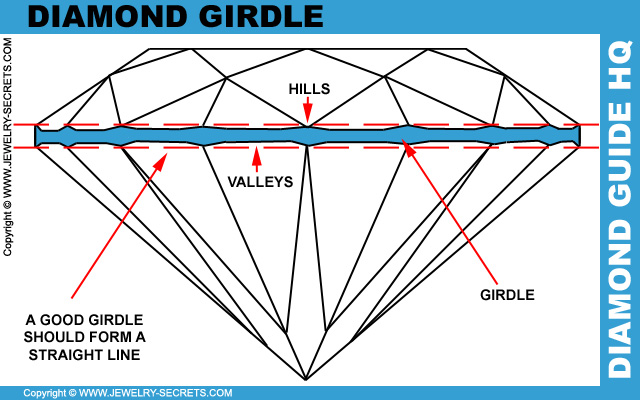
If you look close enough you’ll see that the Girdle is not exactly a straight line. It’s actually made up of sections that rise and fall as they meet up with the Facets above and below the Girdle. And many times, especially with a Poorly Cut Stone, you’ll see this line is all over the place. Some areas will be Thick, some Thin, and even the Girdle itself could be Wavy or Crooked… See below…

So look at the Girdle, it explains a lot!
3) Table Finish, Size, Reflection, and Parallel Lines
While you still have the Diamond tilted sideways (profile view) , look at these two parallel lines and see if they actually look straight or not: The Girdle, and the Top Facet of the
Diamond, which is the Table, as shown here…
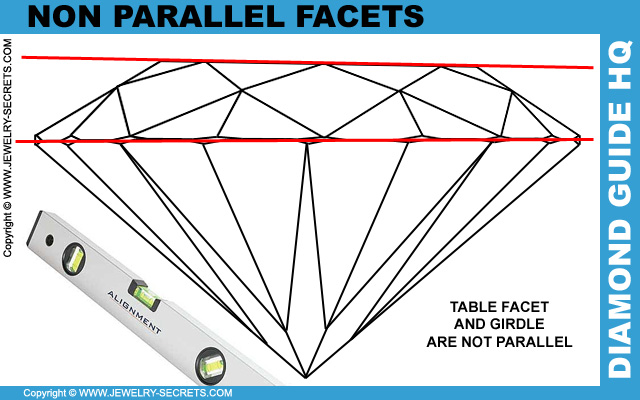
The Girdle and Table should be parallel and even. If not, the Cut is probably off.
Now, let’s look closer at the Table…
Turn the Diamond towards you so it’s face up, but make sure that you catch a light reflection off of the Table. Doing so will allow you to see the full Size, Length and Finish of the Facet.
This is important for 2 reasons: 1) To see if the Facet is Perfectly Smooth. (If the Facet is Flat, Smooth and has no Wavy Grooves (like wavy water), Grain Lines or Polish Marks, then it’s GOOD. Otherwise it indicates a Poor or Bad Polish on the Facets. Like so… )

P.S. Make sure the Diamond is perfectly clean when you view it, otherwise you could be seeing Dust, Dirt, or even Fingerprints on the top of the stone! So always clean it FIRST! :)
And… 2) Because the Size of the Table can tell you whether the Stone is Proportioned properly, or if it’s Cut bad. A Good Cut Diamond should have a Table that’s 52-60% (Ideal is around 58%) of the length of the entire stone, like so…

If the Table looks really small, or extremely large, or even out of proportion, then that Diamond is probably leaking light and not very Brilliant.
Now, let’s see how the Table is Cut… By looking at it’s Reflection in the stone.
This is a little trickier to see with the naked eye, you may need a 10x Jeweler’s Loupe or a Microscope, but try anyway, because it’s another great indicator of Cut.
In the very center of the Diamond, around the Culet, lies the reflection of the Table in the Pavilion, or the base of the Diamond. Like this…

This Reflection should be in the shape of an Octagon, just like the Table is… That is, if it’s Cut well (like, Excellent). If the Cut is bad (or Poor), this Reflection will be Distorted. Compare the different Table Reflections below and see for yourself…
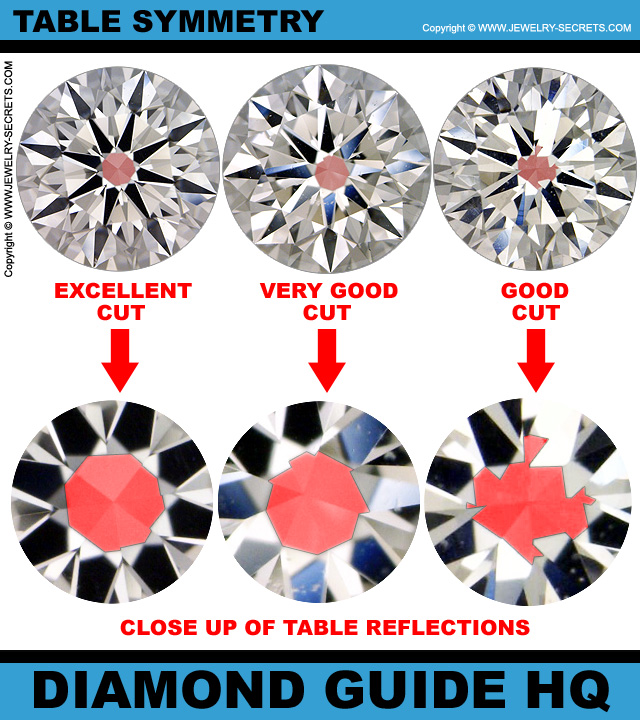
So look at the Reflection. Is it crisp and clean and Octagon, or is it a sight unseen?
4) Culet Off Center or Too Large
And, while you’re focused in the center of the stone, take a look at the Culet.
The Culet lies at the very base of the Pavilion, which is basically the point, or tip of the stone. This point, or dot as it looks like, should be directly center of the Diamond. But many times a Poorly Cut Diamond will have the Culet off center. Compare Culets below…
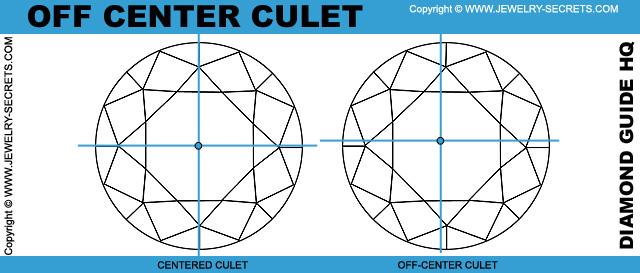
Now, look at the size of the Culet. Does it look like a pinpoint, or does it look like a bullet hole? A Good Culet is hard to see, it’s almost invisible. A Bad Culet will stand out like a sore thumb.
There are eight grades that a Culet can have. They are: None, Very Small, Small, Medium, Slightly Large, Large, Very Large, and Extremely Large.
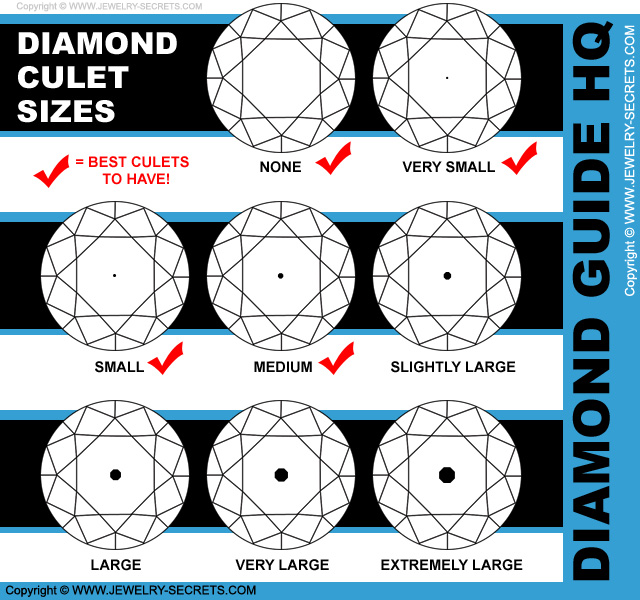
The Best Culets to have are Medium or smaller. But if you get a Culet that’s Very Large or Extremely Large, it will resemble an Old European Cut or an Old Mine Cut Diamond, which are Antique Cuts and are usually not very desireable.
5) Fish Eye
Fish Eye is the name given to a Diamond looks like, well, a Fish Eye.
A Fish Eye Diamond is a Diamond that’s very narrow in depth (from the Table to the Culet), or more commonly known as a Spread Stone. When the Diamond is Cut this narrow, the reflection of the Girdle can actually circle around the Table making it look like a Fish Eye, as seen here…

Spread Stones are very common in stores today (which also makes them cheaper), because a Spread Stone looks much bigger than it really is. Hence, a 3/4 Carat Diamond could look more like a Full Carat (1.00 CT). This may sound great, but it’s really NOT! Spread Stones usually lack Brilliance, and they are often quite Brittle. Not something that anyone would want in a Diamond that’s supposed to last forever.
So look for a dark circle around the Table, if you see one, skip that Stone!
6) Nail Head
Just the opposite of a Fish Eye, is a Nail Head.
Nail Heads are when the Diamond is Cut way too deep, and the center of the stone looks darker because the light is lost through the side of the Stone.
Take a peek…

So if the center of the Diamond looks really dark, keep shopping!!!
Lastly…
7) Compare Millimeter Width
Look ar the entire width of the Stone itself. When you compare it with other equally sized Diamonds (same Carat Weight), do they look the same? Does one Stone appear bigger than the other?
Comparing Stones of the same Carat Weight side-by-side can often tell you if the stone is Spread, or too Deep. An Ideal Cut One Carat Diamond should be 6.5 mm across. But sometimes you’ll see them as small as 5 mm, or as large as 7 mm.
The average millimeter width for Ideal Cut Carat Weights are below…

So if the millimeter is off, chances are, so is the rest of the Stone.
Granted, millimeter differences might be difficult to eye, but if it’s way off and drastic, you should spot it no problem.
So there you go…
7 ways to Determine Cut just by looking at the Stone!
Of course the easiest way is to just buy a Certified Diamond.
A Certified Diamond will have the Cut graded, as in: Excellent, Very Good, Good, Fair, and Poor (that is, if you’re buying GIA which I highly recommend). The Certificate will also list the millimeter size of the Diamond, the Culet Grade, and the Girdle Grade. Not to mention Grades for both Polish and Symmetry as well.
So do yourself a favor and gander at Diamond Cut.
It affects the Beauty and Sparkle of a Stone more than any other Diamond Aspect.
It’s well worth a closer inspection!

See some Excellent Diamonds with Excellent Cuts here at James Allen! :)
Cheers!











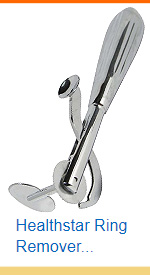

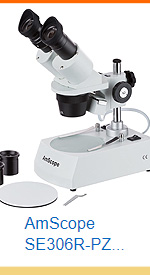




Leave a comment